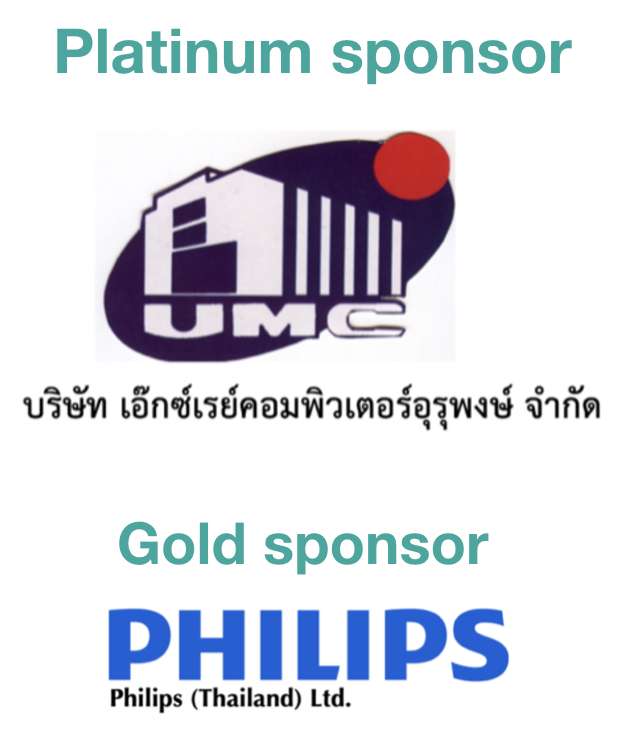A study of technetium-99m red blood cell labeling efficiency in normal subjects for LVEF at King Chulalongkorn Memorial Hospital
Keywords:
Tc-99m labeled red blood cells, Labeling EfficiencyAbstract
Introduction: There are many factors that diminishing the labeling of Tc-99m with Red Blood Cell. It sometimes occurred in nuclear medicine examination, and needed more acquisition time or repeating the examination in worst case. Objective: The purpose of this study is to compare labeling efficiency with image evaluation for labeling yield by nuclear medicine physician and to find the incident of poor labeling in normal subjects. Materials and methods: Patients with request for pre-chemotherapy Left Ventricular Ejection Fraction (LVEF) as baseline study and volunteers who did not on drug affecting red blood cell (RBC) labeling were included in this study. We measured labeling efficiency (LE), and performed anterior chest static image using Siemens SPECT camera model ECAM with Low Energy High Resolution(LEHR) collimator, matrix size 256x256, duration 2 minutes then submitted this image to nuclear medicine physician to evaluate the image as poor, moderate or good labeling. Results: There were 70 cases, 3 cases had LE < 10% with poor image evaluation, 3 cases had LE between 10-30% with moderate image evaluation and 64 cases had LE > 50% with good image evaluation. Conclusion: Repeated examination was needed if LE was less than 10% because of the poor image quality. If LE was between 10-30%, the technologist should increase the acquisition time 2-3 times more than usual. The image quality should met nuclear medicine physician satisfaction before discharging the patient.
Downloads
References
Sampson CB. Complications and difficulties in radiolabeling blood cells: A review. Nucl Med Commun 1996;17:648-658.
Callahan RJ. Radiolabeled Red Blood Cells: Method and Mechanisms Volume 12, Lesson 1 [cited 2014 Mar 21]. Available from; http://pharmacyce.unm.edu/nuclear_program/freelessonfiles/Vol12Lesson1.pdf
Strauss HW, Griffeth LK, Shahrokh FD,Gropler RJ. Cardiovascular system. In: Bernier DR, Christian PE, Laugan JK, editors. Nuclear medicine technology and technics, 3rded. St. Louis; Mosby Year Book;1994.p.279-281.
Thrall JH, Siezzman HA.Nuclear Medicine: The Requisites,St. Louis; Mosby Year Book;1995. p.73-74.
Idalet I. Cantez S. Poor-quality red blood cell labelling with technetium-99m: case report and review of the literature. Eur J Nucl Med 1994;21:173-175.
Patrick ST, Glowniak JV, Turner FE, Robbins MS, Wolfangel RG. Comparison of In Vitro RBC Labeling with theUltraTagRBC Kit Versus In Vivo Labeling, J Nucl Med 1991;32:242-244.
Karesh S. Tc-99m Radiopharmaceuticals.[cited 2017 Mar 21]. Available from http://www.meddean.luc.edu/lumen/meded/radio/nuc_med/radiopharm/sect-f2b.htm
Rehani MM, Sharma SK. Site of Tc-99m binding to the red blood cell: Concise communication, J Nucl Med 1980;21:676-678.
Srivastava SC, Chervu LR. Radionuclide-labeled red blood cell: Current status and future prospects, Sem Nucl Med 1984;14:68-82.
Grady E. Gastrointestinal bleeding scintigraphy in the early 21st century. J Nucl Med 2016;57:252-259
Dam HQ, Brandon DC, Grantham VV, Hilson AJ, Howarth DM, Maurer AH, Stabin MG,Tulchinsky M, Ziessman HA, Zuckier LS. The SNMMI procedure standard/EANM practice guideline for gastrointestinal bleeding scintigraphy 2.0. J Nucl Med Technol 2014;42:308-317Landauer Inc. Dosimeters: InLight® Systems Dosimeters. [Internet]. 2005. [cited 2017 May 20]. Available from: https://www.nagase-landauer.co.jp/english/inlight/pdf/Dosimeters/inlightdosimeters.pdf
Hesse B, Lindhardt TB, Acampa W, Anagnostopoulos C, Ballinger J, Bax JJ, Edenbrandt W, Flotats A, Germano G, Stopar TG, et al. EANM/ESC guidelines for radionuclide imaging of cardiac function. Eur J Nucl Med Mol Imaging. 2008;35:851-885.
Corbett JR, Akinboboye OO, Bacharach SL, Borer JS, Botvinick EH, Henzlova MJ, Kriekinge SV. ASNC imaging guidelines for nuclear cardiology procedures: Equilibrium radionuclide angiocardiography. J Nucl Cardiol 2006;13;e56-e79.

Downloads
Published
How to Cite
Issue
Section
License
บทความที่ได้รับการตีพิมพ์เป็นลิขสิทธิ์ของสมาคมรังสีเทคนิคแห่งประเทศไทย (The Thai Society of Radiological Technologists)
ข้อความที่ปรากฏในบทความแต่ละเรื่องในวารสารวิชาการเล่มนี้เป็นความคิดเห็นส่วนตัวของผู้เขียนแต่ละท่านไม่เกี่ยวข้องกับสมาคมรังสีเทคนิคแห่งประเทศไทยและบุคคลากรท่านอื่น ๆในสมาคม ฯ แต่อย่างใด ความรับผิดชอบองค์ประกอบทั้งหมดของบทความแต่ละเรื่องเป็นของผู้เขียนแต่ละท่าน หากมีความผิดพลาดใดๆ ผู้เขียนแต่ละท่านจะรับผิดชอบบทความของตนเองแต่ผู้เดียว




